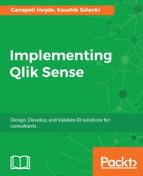At the end of the chapter, let us summarize all things we learnt in this chapter. Being the heart of the book, this chapter tried to teach us many aspects of development, starting from getting the data from the source system to converting it into the data insight visualization for end users to consume it.
We started with understanding the data extraction process, where we learned about ETL (Extract, Transform, and Load). Within the ETL process, we focused mainly on the extraction process, where we learned about full load and incremental load. We saw what kind of data would need what kind of load strategy.
In incremental load, we saw how to handle three main scenarios, namely insert, update, and delete. We also saw the scripting and sample outputs for each one of them.
After the extraction phase, we started with data modeling and learned about dimensional modeling with the basic concepts of fact tables and dimension tables. Moving forward, we saw two schemas of dimensional modeling, that is star schema and snowflake schema.
After understanding the fundamentals of data modeling, we looked at the common challenges of data modeling and the ways to overcome them. Then we learned the script management methodology and its importance.
Progressing forward, we looked at the best practices used in data modeling which have positive impact on the performance of your application. We then saw the data modeling validation methods, that is row count method and field metadata information.
We also touched upon the security aspects and looked at the how to write security script to restrict unauthorized access to data and columns of the application.
Once our data got ready, we started learning the visualization strategy, in which we learned about the concept of dashboard, analysis, and reporting (DAR) in detail. Then we started looking at the various objects available in Qlik Sense and understood in which scenarios they suit best. Next we saw how to add our own objects using extension and the impact of good extensions on your dashboards.
Later we looked at the best practices which should be used in our designing. We also looked at an example of good and bad visualization.
As the last topic of the chapter, we covered the power of storytelling in Qlik Sense.
In the next chapter, we will look at the validation of the application, why it is important, and user acceptance testing (UAT) and go live strategy.
